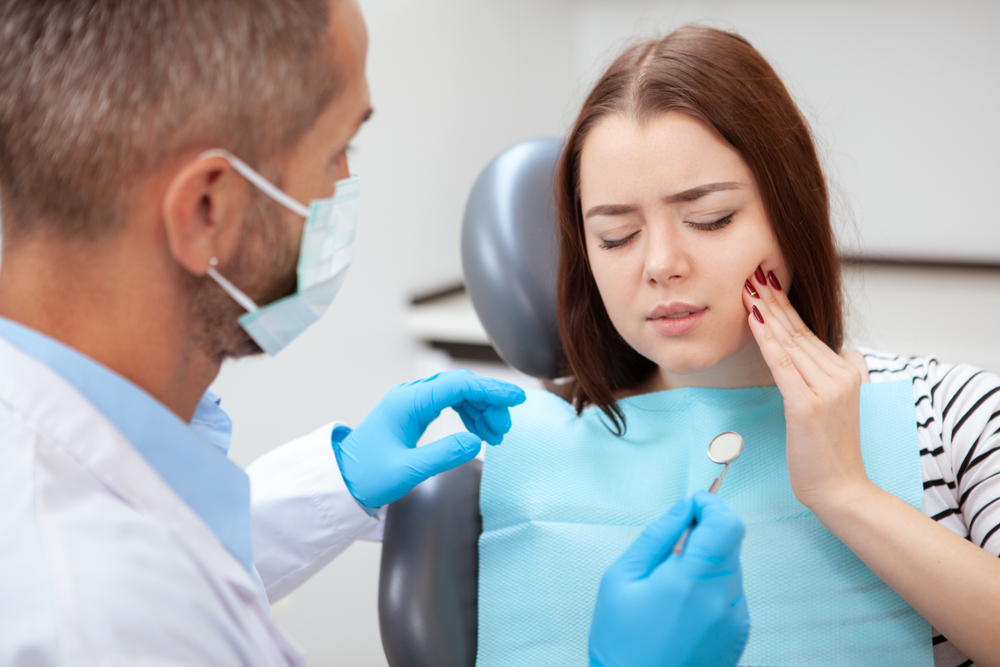Emergency Dental Las Vegas can occur anytime and without warning. They can range from a chipped tooth to severe pain or an abscess.
These issues require immediate attention to prevent further complications and alleviate pain. They can also result in higher costs than regular dental appointments.

Luckily, there are many ways to save on emergency dental services. You can inquire about discount or payment plans, seek out alternative financing options, and explore community resources for low-cost care.
Broken or Chipped Tooth
Broken or chipped teeth are a common dental injury and one that can occur in a variety of ways. Biting down on a hard food, a sports injury or an accident with a hard object are all possible causes of tooth breakage. Regardless of how the break happens, the first thing a person should do is call an emergency dentist to book a same-day appointment. A broken tooth can be accompanied by severe pain or bleeding and should always be treated as an emergency to preserve the tooth.
In the event of a broken tooth, patients should gather all the remaining pieces and store them in a clean container. If the patient experiences bleeding, they should place a piece of gauze or cotton ball on the affected area and apply pressure to stop any blood flow. The patient should also rinse their mouth with warm water and take an over-the-counter pain reliever to manage discomfort and keep the swelling down.
During a visit to an emergency dentist, the specialist will assess the damage and provide prompt treatment. This may include alleviating the initial discomfort and performing a restorative procedure such as dental bonding, veneers or a dental crown. The type of restoration will depend on the severity of the crack or chip. If the crack or chip exposes nerves, a root canal will be performed to protect and save the tooth.
For a cracked or chipped tooth that hasn’t exposed nerves, the dentist will apply a tooth-colored composite to strengthen and repair the damaged area. This will prevent the crack from causing further problems and preserving the remaining healthy parts of the tooth.
In cases where the tooth is fully knocked out, the emergency dentist will try to reattach the tooth back in its socket. If it isn’t possible to restore the tooth, they will recommend a permanent tooth replacement solution such as a dental implant. Taking good care of your teeth is the best way to avoid dental emergencies like these. Regular brushing and flossing along with regular dental visits help to catch minor problems before they escalate into something more serious.
Knocked Out Tooth
Kids are notoriously active and playful, and a knocked out tooth is a very common dental emergency. Although a knocked out tooth can be very frightening, there is good news: a permanent tooth that has been knocked out can often be replanted, or put back into its socket, if it is treated quickly enough.
A knocked out tooth is defined as a tooth that is completely loose in its socket or has been fully dislodged from the jawbone. Knocked out teeth are often a result of accidents or sports-related trauma, and it’s important to wear a mouthguard while playing or training for any sport. It’s also a good idea to visit your dentist for an examination on a regular basis, so that any issues can be dealt with before they become worse.
When a knocked out tooth occurs, the most important step is to see your dentist within 30 minutes, as this is the window of opportunity that gives the best chance for successful replanting. However, it’s possible for a knocked out tooth to be saved even if it has been out of the socket for up to 60 minutes, though every minute that passes decreases the odds of success.
First, try to reposition the tooth in its socket, but don’t force it in. If you can’t do this, place the tooth between your gums and cheek or in a container of milk (or a nonprescription solution such as Hank’s Solution or Save-a-Tooth) or saliva. Avoid storing the tooth in standard tap water, as this can kill cells that are needed for replanting the tooth.
During the exam, your dentist will clean and flush the socket to remove any debris that may be lodged in it. They will then reposition the tooth in its socket and use a dental splint to secure it to the adjacent teeth until it heals. A replanted tooth will typically need root canal treatment. As an extra measure, you can rinse the socket with warm water to keep it moist and promote healing. During this time, it is important not to eat or drink anything except water, as this can cause the knocked out tooth to shift into a position that is difficult for the dentist to reposition.
Infections
Infections in or around the mouth, jaw, and gums are the underlying causes of many dental emergencies. A bacterial infection that is not treated promptly can develop into a dental abscess. Dental abscesses are often painful and require urgent treatment. The dentist can drain the abscess and can start a process to replace the tooth. This will allow the patient to eat and speak normally again.
Inflammation of the soft tissues surrounding the teeth can also lead to a medical emergency, particularly if it spreads into the neck or pharyngeal spaces and compromises airway function. This is known as Ludwig angina and it usually results from an ignored or inadequately managed local dental infection. The signs of Ludwig angina include pain, pyrexia, and cervical lymphadenopathy.
Dental infections can be prevented with proper oral hygiene practices and frequent dental visits. Patients should be educated to understand the importance of oral health maintenance with daily brushing and flossing in addition to regular dental visits. In addition to preventive dentistry, patients should be encouraged to avoid smoking and to manage their diabetes and other risk factors that predispose them to dental infections.
Most dental trauma, such as fractured or chipped teeth and broken or lost restorations, does not qualify as a dental emergency unless the patient experiences extreme pain and/or bleeding. These cases should be referred to a dental specialist for appropriate evaluation and treatment as soon as possible to avoid long-term complications.
Severe Bleeding
A severe toothache is not always an emergency, but if you find yourself in a situation where your pain is unbearable and blood is flowing from the mouth or nose, you have a dental emergency on your hands. Severe bleeding can be dangerous, and if it is not treated promptly, it can lead to the formation of an intraoral hematoma or other complications such as loss of blood, airway compromise and even life-threatening infections.
They can give you instructions on what to do until they are able to see you in person.
Most dental emergencies involve pain, swelling, and the risk of infection. However, some may also present with signs of other serious medical conditions, such as heart disease, stroke or diabetes. In these cases, it is important to seek medical attention as soon as possible in order to minimize long-term damage.
A swollen and painful spot in the gums is not necessarily a dental emergency, but it can be a sign of an abscess. If it is not treated in a timely manner, an untreated abscess can lead to complications such as bone loss around the roots of your teeth and infections in other parts of your body, including the sinuses and your brain.
A symptom of an abscess is severe bleeding, which can be caused by the pressure from the build-up of pus and the inflammation of surrounding tissue. If you experience this symptom, call an emergency dentist right away and rinse your mouth with saltwater several times per day to help draw the pus to the surface and speed up healing. If your swollen gum is accompanied by a fever, this can be a sign of an infection that requires immediate medical attention.
